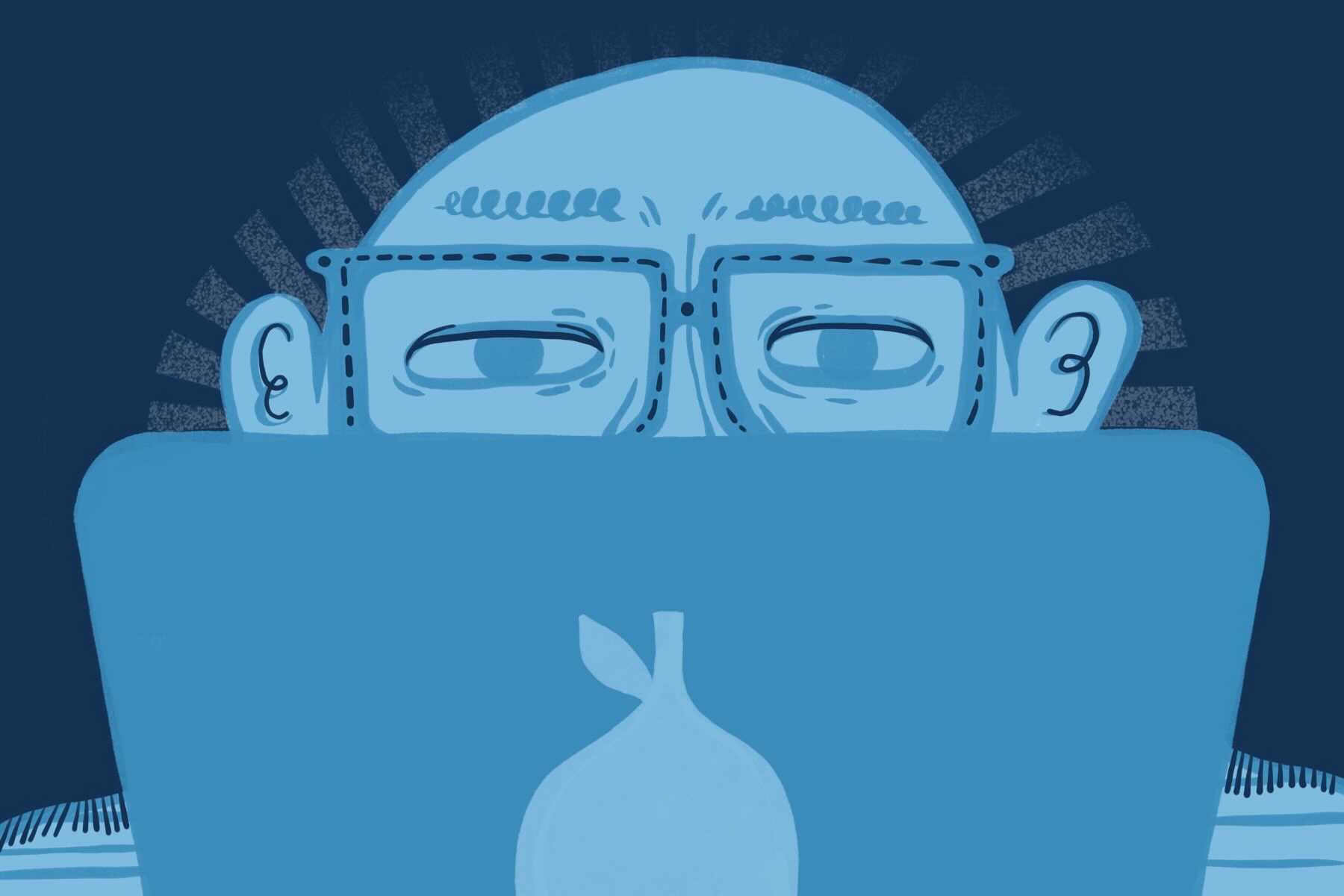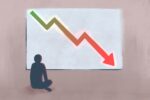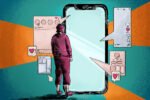Locked in their homes, students have been forced into online Zoom classrooms to carry out their college experience digitally. Professors required their students to turn in projects electronically and post stale responses to online discussion boards. Several institutions now provide in-person learning options, but they refuse to acknowledge the emotional toll this difficult transition takes on staff and students.
Many students fall into the void, staring at the blinking cursor on their Microsoft Word documents for several hours because their work doesn’t stop when they leave campus for the day. There may not be a way to solve COVID-19 or perfectly adjust online learning techniques, but there is an accessory that may be able to soothe your exhausted eyes — blue light glasses.
Studies have shown that prolonged exposure to digital screens can have adverse effects on one’s eyes. On average, Americans spend up to five hours in front of computer and phone screens. Almost 70% of adults now experience eye strain, blurry vision, headaches and insomnia like never before. This has led scientists to believe that blue light, emanating from digital screens and the sun, is the culprit.
Blue light itself isn’t necessarily a bad thing. Blue wavelengths from the sun are beneficial, boosting one’s attention, reaction times and mood. Our eyes have natural filters to protect us against harmful light rays, but prolonged exposure to high-energy blue light waves can infiltrate the eyes, causing painful consequences.
Thus, blue light glasses were invented with a specifically designed lens to block out the blue light reflecting off of computer and phone screens. Blue light lenses can be added to prescription glasses or purchased separately online. Some blue light glasses have an added coating called a digital block that “enhances visual comfort with improved contrast & reduced eye strain” and “minimizes harmful light.” Because these glasses are a relatively newer product, scientists are having trouble deciding how well they work.
The Benefits
Reduce Eye Discomfort and Headaches
When we begin to feel tired, the levator muscles in our eyelids get fatigued and start to droop. This exhaustion from surviving one day at a time combined with our constant attachment to electronic devices can make it painful to simply glance from one side to the other.
In particular, blue light can make people more prone to headaches because it is what scientists call high energy visible light. Its short wavelengths and high energy scatter upon reaching the eye, diminishing contrast levels and making it increasingly difficult to focus. The harder our eyes have to work, the more likely we are to develop headaches. That is where the blue light filtering technology comes in. For Eyes, a website that sells blue light glasses, writes that this type of glasses can “enhance your focus and reduce eye strain.”
It seems that these promising statements are not just lies told to enhance the product’s appeal. Many people who purchase and wear their blue light glasses regularly are sharing their satisfaction. “My eyes don’t get as tired at the end of the day,” says Michael Clarke to WebMD. “My frequency of headaches has gone down. I’m able to focus on things easier on a screen.” Consumers enjoy being able to work longer hours in front of their screen more productively and comfortably.
Make Sleep Easier
One of the most surprising impacts of blue light glasses is that they enhance sleep patterns. It turns out the scientists that have been begging people to put down their phones were right, as much as people seem to ignore them. Stressing about school, work and health are more than enough to keep you up at night, but one of the biggest and quietest causes of sleeplessness is blue light.
The blue light emitted from screens increases alertness and suppresses the body’s natural release of melatonin, a hormone that induces sleep. It can also throw off your circadian rhythm — your internal sleep clock. While putting your phone away is the best option, wearing blue light glasses late at night can reduce the impact of blue light and allow you to get a better night’s sleep.
Even blue light-skeptic scientists are surprised by the results of their studies. A 2021 article in Applied Psychology describes a study in which researchers gathered information from business managers who wore blue light glasses. From the data, the study concluded that wearing the glasses improved sleep as well as work engagement, performance and behavior. In a similar study, Dr. Lisa Ostrin found that the participants who wore blue light glasses showed a 58% increase in their melatonin levels at night.
Some light-blocking lens designers are experimenting with tints. A study by several doctors demonstrates how amber-tinted blue light glasses improved sleep quality in insomniacs when worn two hours before going to sleep. Not only did participants sleep better, but they fell asleep faster and for longer periods. Researchers hypothesize that the glasses are responsible for blocking out the blue light and allowing melatonin to cycle evenly throughout the body.
The Conflicting Evidence
As hopeful as some people may be about blue light glasses, some researchers are finding that the benefits have less to do with the glasses and more to do with the way we look at screens. When we stare at a digital screen, we tend to blink less, which can cause some eye strain. Rather than blue light, scientists suggest that people are experiencing computer vision syndrome or digital eye strain, which causes burning, itchy and dry eyes.
The American Academy of Ophthalmology declares that the effects of eye strain are not caused by anything coming from the screens but from how people use their screens. If you are like the majority of people and interact with screens all day, there are several ways to soothe eye strain without breaking the bank.
Positioning your screens about 25 inches away from your eyes at a downward angle is a good start. Contact wearers should give their eyes a break by wearing prescription glasses. Dry eyes can be fixed with artificial tears or other over-the-counter eye drops. Many eye specialists recommend practicing the 20-20-20 rule in which you shift your eyes every 20 minutes to look at something at least 20 feet away for 20 seconds. Several devices have a night shift or a built-in filter that decreases the amount of blue light coming from the screen that you can use as well.
Where To Buy Them
If you’re looking to buy some blue light glasses, websites such as Warby Parker and Eye Buy Direct sell blue light filtering lenses, which can be added to any frame at a price range between $30-50. Stores like Target and J.Crew have cheap blue light glasses averaging $20 while options from Glasses USA, Look Optic and Felix Gray cost around $65 to $95.
Whether you believe in their effects or not, blue light glasses are making people more conscious of their screen time overdose. In turn, people are more likely to put their phones away, turn off the TV and pick up a book. If you find yourself spending most of your day in front of a computer or phone screen, it may be worth picking up a pair of these glasses and giving them a try.

















